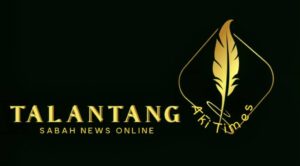Henrynus…those who opt out of the Momogun identity may remain nameless or categorised as “lain-lain” in national statistics.
KOTA KINABALU : – Datuk Henrynus Amin said the Kadazan and Dusun communities should not impose their identity on other indigenous groups.
The former President of the Momogun National Congress (MNC) addressed the ongoing debate over the adoption of the term “Momogun” as a collective identity for the indigenous people of Sabah.
The debate centers around whether the various ethnic groups in Sabah, such as the Kadazan, Dusun, Murut, and others, should unite under this single term to strengthen their collective identity.
In a bold statement today, Henrynus acknowledged that some individuals who identify as Kadazan or Dusun may hesitate to join the Momogun initiative.
,”These groups, who make up only 17.9% of Sabah’s population, often perceive themselves as strong and influential,” he said.
However, he argued that the Kadazan and Dusun communities, which are concentrated in areas like Penampang, Tuaran, and Tambunan, should not impose their identity on other indigenous groups such as the Murut, Sungai, Bisaya, Idaan, and Tidung, who collectively represent about 20% of Sabah’s population as “Bumiputra lain.”
Henrynus highlighted the challenges faced by indigenous Sabahans in the national data system, where they are often categorised as “lain-lain” (others) rather than by their specific ethnic identities.
He noted that this lack of recognition contributes to the erosion of their collective identity and the marginalisation of Momogun people in various federal departments and agencies.
“Ethnic cleansing is happening in many federal departments and agencies, where Momoguns are denied access. Without a clear identity in statistics, we cannot detect or address these disparities,” he stated.
The Momogun initiative, according to Henrynus, aims to correct this by uniting the various indigenous groups of Sabah under a single, recognizable identity.
With less than a million Kadazan-Dusun people out of a national population of 35 million, he argues that it is logical for these groups to unite based on their shared geographical origins, culture, language, genetics, and history.
He compared this to the Chinese community in Malaysia, which, despite its diversity, is united by common cultural and linguistic ties.
Henrynus draws a parallel with the Dayak community in Sarawak, where various indigenous groups, such as the Iban, Bidayuh, and Kelabit, proudly identify as Dayak.
He pointed out that no Iban would reject the Dayak identity in favor of solely identifying as Iban, and he questions why the same unity cannot be achieved in Sabah under the Momogun identity.
In official forms, he envisioned a future where the categories would include “Melayu,” “Cina,” “India,” and “Dayak/Momogun,” allowing the indigenous people of Sabah to assert their identity more clearly.
He emphasised that those who prefer to identify as Kadazan or Dusun can still do so, but they should not hinder those who wish to unite under the Momogun banner.
The Momogun initiative has already garnered significant support, with 75 out of 92 registered NGOs representing Dusunic, Murutic, and Paitanic tribes signing the Momogun Declaration.
Henrynus congratulated the MNC, particularly Tan Sri Wences Angang and his dedicated team, for their efforts in promoting the Momogun identity.
“We want two distinct Anak Negeri in Sabah: Momogun, who are orang Borneo asal (indigenous people of Borneo), and Bajau/Sama, who are maritime communities from the Sulu seas,” he explained.
“But for statistical purposes, we differentiate orang Borneo asal and orang asal Laut. Bajau/Sama look after their interests, and Momogun should do the same.”
Henrynus acknowledged that some Kadazan individuals refuse to be identified as Momogun, possibly due to misinformation or ignorance.
However, he remains hopeful that more people will join the movement as awareness grows.
He warned that continued division among the Dusunic, Murutic, and Paitanic communities will only serve to weaken their collective influence and further marginalize them in the national context.
As the Momogun movement gains traction, Henrynus expressed optimism about its future.
He praised the recent meeting between the MNC and TYT Juhar, describing it as a step in the right direction.
Henrynus concluded his statement with a call for unity and mutual respect, urging those who disagree with the Momogun initiative to allow those who support it to continue their efforts.
“Let us agree to disagree on Momogun,” he said, adding that those who opt out of the Momogun identity may remain nameless or categorized as “lain-lain” in national statistics.
